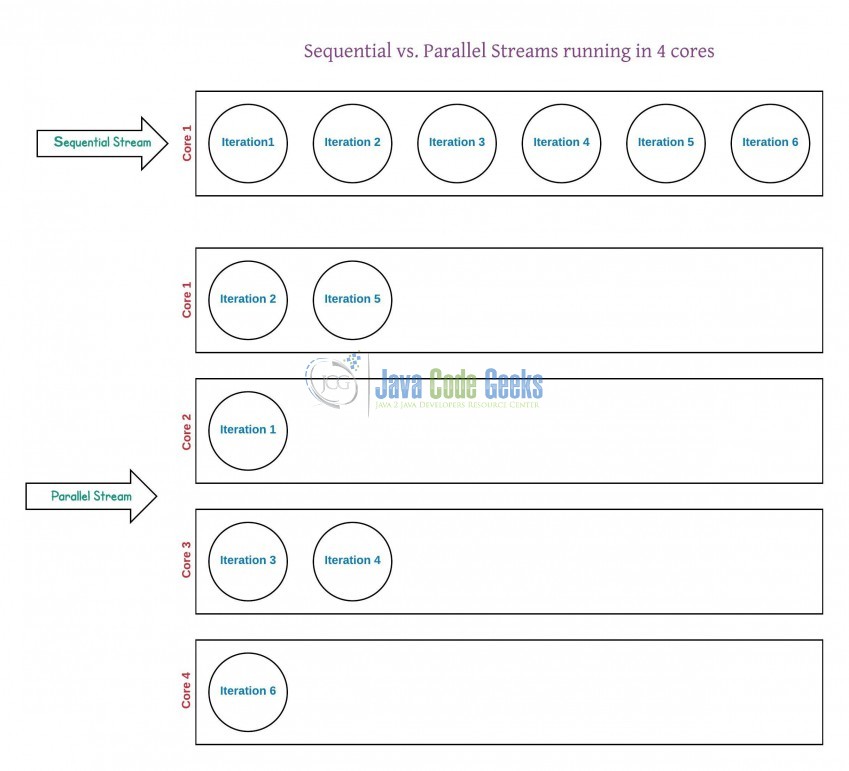

The Comparator Interface provides us comparison and sorting options that we can use with Java Streams. Streams can be closed by calling the close method or by using trywith-resource statements.Īn example use case where a Stream should be closed is when you create a Stream of lines from a file: try (Stream lines = Files.lines(Paths. Hi all, in this article, we will learn Java Streams Comparators like paring (), Comparator.naturalOrder (), Comparator.reverseOrder (), etc. The Stream interface extends AutoCloseable. Once a terminal operation is called, the Stream object becomes unusable.

Without a terminal operation, the stream is not processed.

Note that operations defined on the Stream are performed because of the terminal operation. This operation is a terminal operation, thus making it impossible to operate on it again. In the example, each element is simply being printed to the console. Finally, the forEach(action) operation performs an action which acts on each element of the Stream, passing it to a Consumer.The above SQL expression automatically returns the maximum salaried employee's details, without doing any computation on the developer's end. SELECT max(salary), employeeid, employeename FROM Employee. For example, consider the following SQL statement. Using stream, you can process data in a declarative way similar to SQL statements. The sorted() operation sorts the elements of the Stream according to their natural ordering (lexicographically, in the case of String). Stream is a new abstract layer introduced in Java 8. Java Streams Files and Paths Read and Process files using Streams Tech Primers - This video covers the Files and Paths to process files/lines.Note that the map() operation will return a stream with a different generic type if the mappingįunction returns a type different to its input parameter. In this case, each fruit String is mapped to its uppercase String version using the method-reference String::toUppercase. The map() operation transforms each element using a given function, called a mapper.The predicate is given as a lambda expression. In this case, it retains the elements containing an “a”. The filter() operation retains only elements that match a given predicate (the elements that when tested by the predicate return true).Create a Stream containing a sequenced ordered Stream of fruit String elements using the static factory method Stream.of(values).
#Streams in java code
The operations performed by the above code can be summarized as follows: Import fruitStream = Stream.of("apple", "banana", "pear", "kiwi", "orange") Create a book.java class and main.java class in /Streams, and add the following code snippets. We will create a new directory, Streams in the IntelliJ IDEA, to perform this task. We want to count the number of books titles with more than 600 pages in this ‘class book.’ Let us say we have a class book with the title, the author of the book, and the number of pages. Some examples are - collect, reduce, forEach. Terminal Operations - These operations mark the end of a Stream in Java. Reduce verbose code: By using stream, you can chop off some lines of code, making the code less verbose.īefore we start looking at the streams, we need to understand the kind of problem they solve. Types of Streams Operations in Java Intermediate Operations - These operations are executed lazily and generate results as streams that can be pipelined to.For the sake of simplicity, I will only show you the pieces of code related to the Change Streams directly. I will show you 5 different examples to showcase some features of the Change Streams. Code is more intuitive: A code with streams is easier to understand and does not require much thinking. In this blog post, I will be working on the file called ChangeStreams.java, but Change Streams are super easy to work with.Minimum code errors: Streams are performed step-by-step, preventing unnecessary bugs and code errors.Basic knowledge of Java programming language.Prerequisitesįor this tutorial, the reader should have: We create streams from either a collection, arrays, or an arbitrary number of objects. Streams are one of Java’s powerful features that allow developers to process data collection declaratively, making code cleaner and concise.Ī stream is a collection of objects piped together to generate a particular outcome.


 0 kommentar(er)
0 kommentar(er)
